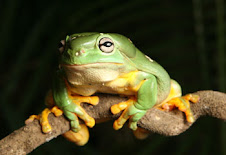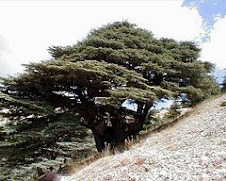by Dr. Reese HalterConservation biologist, broadcaster
All is not well in the semi arid, warming oil sands of Alberta -- the second largest hydrocarbon reserves in the world; only Saudi Arabia has more. To get at the oil sands and supply the Keystone XL pipeline, its leaving Canada with a colossal carbon footprint, which has increased by 120 percent since 1990. Of all the industrial nations, Canada footprint has increased the most during this time.
An overheating climate has enabled mountain pine beetles -- nature's emissary of massive ecological change to march north and east like never before in modern or prehistoric times.
Recent data from the International Energy Agency shows that governments in developing countries pay $310 billion subsidies to oil, gas and coal companies.
So far both politicians and the public has a burgeoning disdain for climate and biological sciences that overwhelmingly shows that burning carbon-based fuels are forcing the climate and causing climate disruption, globally. Moreover, many politicians and the public are grabbing at whatever denial statements they can -- analogous to the behavior of an addict.
They can run but they cannot hide from some conspicuous and startling facts across western North America. Indigenous bark beetles, on an epic feeding frenzy fueled by rising temperatures, have killed over 60 million acres of mature pine forests. In just over a decade the beetles have killed billions of trees or enough wood to make a city of 8 million homes.
Entire hillsides and mountains are red. Those dead forests are ripe for wildfires that are costing taxpayers billions of dollars and perilously placing over four million homeowners who straddle the urban/wildland interface at high risk.
These are the irrefutable facts whether you fly, drive or peddle your bicycle across the West, I guarantee that you will encounter the wrath of the unintended consequences of spewing 82 million metric tons, daily, of greenhouse gasses into the atmosphere -- death of our wild forests.
What's more is that when forest ecosystems become destabilized by rising temperatures ranging in the Northern Rocky Mountains by 2.4 degrees F to 3.6 degrees F in the Southern Rockies some organisms, like the trees -- loose; while others, like the mountain pine beetles -- win.
It's not that the bark beetles are just killing the trees but rather in less than a decade they have completely and perfectly adapted to enter Earth's northern most contiguous forest type -- the boreal or emerald crown of our planet.
Up until very recently the ecological "cold curtain" prevented the ravenous bark beetles from crossing the great continental divide. Beetles quite simply couldn't exist on the northern, eastern side of the Rocky Mountains or if they did they reproduced within 2 years and populations never reached an epidemic.
In central British Columbia over the past decade and a half the mountain pine beetles have single-handily devoured half the commercial forests or an astounding 39 million acres (enough wood to build 5 million homes). As if that weren't bad enough as those forests decay they will be releasing 250 million metric tons of greenhouse gases or the equivalent of five years of car and light truck emissions in Canada. Essentially, 39 million acres of British Columbian lodgepole pine forests that once sucked CO2 out of the atmosphere are now dead, decaying and bleeding CO2 into an ever-rising pool of accumulating heat-trapping gases.
The plot thickens, considerably. At least thrice in the last decade billions of bark beetles were sucked up into the lower stratosphere and spat out onto the eastern side of the Northern Rockies. Millions lived and successfully reproduced within a year (because temperatures have risen that dramatically) enabling populations to reach an epidemic.
In fact, in the summer of 2006, my faithful companion, "Naio", a Chesapeake Bay retriever and I were on a road trip in Northern Alberta near Grand Prairie. We were exploring a pine forest when the sky rained bark beetles on us. In almost 3 decades of working in wild forests around the globe, I've never experienced anything like it.
Mountain pine beetles carry blue stain fungi, bacteria and micro-organisms which help them overcome the tree's autoimmune system. The beetles have quickly found a strain of blue stain Leptographium longiclavatum that is adapted to the colder eastern Rocky Mountain temperatures. Furthermore, the beetles have reduced their body size and have successfully adapted too much thinner living bark spaces of the diminutive Jack pines.
Tree scientists and entomologists knew that mountain pine beetles could exist in lodgepole/Jack pine hybrids in Alberta. In the last half-decade the beetles have successfully transited from the hybrids into pure Jack pines -- an a priori.
The coast is now clear for them to march across northern Canada to the Atlantic coast and into the Jack pines of the Lake states.
Earth's natural systems for absorbing CO2 are rapidly breaking down. Let me remind you that 40 percent of the oceanic phytoplankton is missing because warming currents are preventing upwelling of cold waters carrying essential nutrients requisite for growing green life and supporting the base of the entire marine ecosystem.
The time for subsidizing toxic and life threatening carbon-based fuels is over. Imagine the breathtaking innovations in new green energies if we made available $310 billion per annum to all centers of concentrated brainpower - our colleges. And then imagine the millions of long-term jobs those green industries will create.
Politicians and the public can sneer at climate and biological sciences but how long can they turn a blind eye to the death of Mother Nature?
Earth Dr Reese Halter is a science communicator: voice for ecology and distinguished conservation biologist at California Lutheran University. His latest books are The Insatiable Bark Beetle and The Incomparable Honeybee.
Source: HuffPost
Iran Rejects US Terms at UN Council
-
DV coeditor Faramarz Farbod joined AnewZ.tv (Baku, Azerbaijan) this morning
to discuss the escalating U.S.-Iran nuclear standoff and the sharp
divisions ...
4 hours ago
























